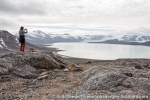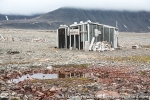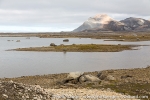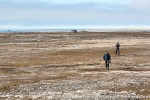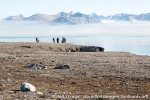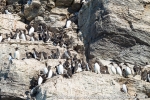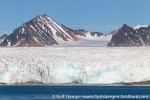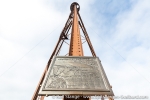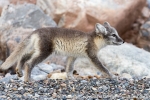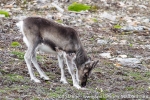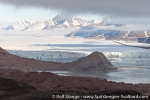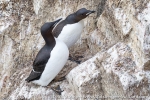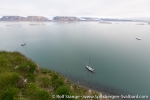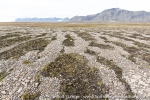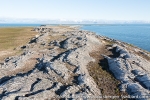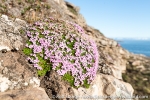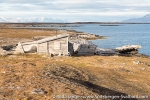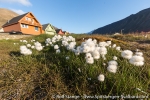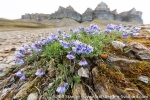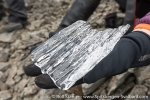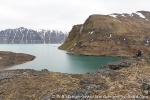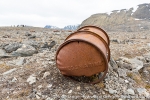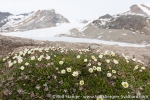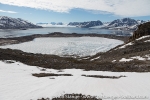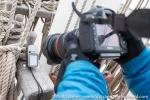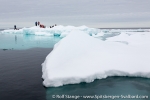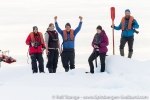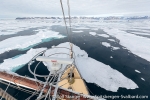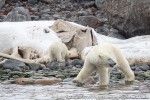-
current
recommendations- Liefdefjord
New page dedicated to one of Spitsbergen's most beautiful fjords. Background information and many photos.
- New Spitsbergen guidebook
The new edition of my Spitsbergen guidebook is out and available now!
- Liefdefjord
New page dedicated to one of Spitsbergen's most beautiful fjords. Background information and many photos.
Page Structure
-
Spitsbergen-News
- Select Month
- May 2025
- April 2025
- March 2025
- February 2025
- January 2025
- December 2024
- November 2024
- October 2024
- September 2024
- August 2024
- July 2024
- June 2024
- May 2024
- April 2024
- March 2024
- February 2024
- January 2024
- December 2023
- November 2023
- October 2023
- September 2023
- August 2023
- July 2023
- June 2023
- May 2023
- April 2023
- March 2023
- February 2023
- January 2023
- December 2022
- November 2022
- October 2022
- September 2022
- August 2022
- July 2022
- June 2022
- May 2022
- April 2022
- March 2022
- February 2022
- January 2022
- December 2021
- November 2021
- October 2021
- September 2021
- August 2021
- July 2021
- June 2021
- May 2021
- April 2021
- March 2021
- February 2021
- January 2021
- December 2020
- November 2020
- October 2020
- September 2020
- August 2020
- July 2020
- June 2020
- May 2020
- April 2020
- March 2020
- February 2020
- January 2020
- December 2019
- November 2019
- October 2019
- September 2019
- August 2019
- July 2019
- June 2019
- May 2019
- April 2019
- March 2019
- February 2019
- January 2019
- December 2018
- November 2018
- October 2018
- September 2018
- August 2018
- July 2018
- June 2018
- May 2018
- April 2018
- March 2018
- February 2018
- January 2018
- December 2017
- November 2017
- October 2017
- September 2017
- August 2017
- July 2017
- June 2017
- May 2017
- April 2017
- March 2017
- February 2017
- January 2017
- December 2016
- November 2016
- October 2016
- September 2016
- August 2016
- July 2016
- June 2016
- May 2016
- April 2016
- March 2016
- February 2016
- January 2016
- December 2015
- November 2015
- October 2015
- September 2015
- August 2015
- July 2015
- June 2015
- May 2015
- April 2015
- March 2015
- February 2015
- January 2015
- December 2014
- November 2014
- October 2014
- September 2014
- August 2014
- July 2014
- June 2014
- May 2014
- April 2014
- March 2014
- February 2014
- January 2014
- December 2013
- November 2013
- October 2013
- September 2013
- August 2013
- July 2013
- June 2013
- May 2013
- April 2013
- March 2013
- February 2013
- January 2013
- December 2012
- November 2012
- October 2012
- September 2012
- August 2012
- July 2012
- June 2012
- May 2012
- April 2012
- March 2012
- February 2012
- January 2012
- December 2011
- November 2011
- October 2011
- September 2011
- August 2011
- May 2011
- April 2011
- March 2011
- February 2011
- January 2011
- December 2010
- November 2010
- September 2010
- August 2010
- July 2010
- June 2010
- May 2010
- April 2010
- March 2010
- February 2010
- November 2009
- October 2009
- August 2009
- July 2009
- June 2009
- May 2009
- April 2009
- March 2009
- February 2009
- January 2009
- December 2008
- November 2008
- October 2008
- August 2008
- July 2008
- June 2008
- May 2008
- April 2008
- March 2008
- February 2008
- April 2000
- Select Month
-
weather information
-
Newsletter

| Guidebook: Spitsbergen-Svalbard |
Home →
Yearly Archives: 2017 − News & Stories
Raudfjord-Gråhuken – 01st August 2017
Tue
1 Aug
2017
Raudfjord is one of Spitsbergen’s most beautiful fjords, and we enjoyed the stunning scenery during a little mountain hike. The weather remained good and the sea calm, so we could later make a visit to Christiane Ritter’s famous hut at Gråhuken and a lovely evening walk on the north coast of Spitsbergen.
Gallery – Raudfjord-Gråhuken – 01st August 2017
- gallery anchor link: #gallery_1225
Click on thumbnail to open an enlarged version of the specific photo.
Dei Sju Isfjella – 31st July 2017
Mon
31 Jul
2017
There is nothing you could call wind and weather here at the time being, fjord and sea are calm as a little lake. So we could anchor close to Kapp Mitra in outer Krossfjord, close to the open west coast. The famous polar bear hunter Henry Rudi built a hut here in 1910 which was later also used by scientists. Lots of stories in this lovely landscape, which has almost a mediterranean appearance, with its great beaches and little rocky capes. You might have thought we had taken a wrong turn last night if it had not been for the walrus skull on the beach …
Gallery – Dei Sju Isfjella – 31st July 2017
- gallery anchor link: #gallery_1223
Click on thumbnail to open an enlarged version of the specific photo.
The passage further north along the outer coast is often a rough ride. But today, „the seven icebergs“ (Dei Sju Isfjella) is a lovely trip under blue sun and a sea so calm that we take the rare opportunity to visit a bird cliff or two and we even make a landing in one of the few places there the terrain gives us the chance on this otherwise rather hostile coastline.
Kongsfjord – 30th July 2017
Sun
30 Jul
2017
We want to take things as they come, and that is really the way to do it. It couldn’t be any better. It remains calm in northern Forlandsund, so we make a little morning walk on Prins Karls Forland, enjoying some great views on the wild mountain and glacier scenery from a moraine ridge.
Later, we make a stop in Ny-Ålesund, for some sightseeing, shopping and to fill up the diesel tanks. Now we are ready for whatever is waiting for us!
Gallery – Kongsfjord – 30th July 2017
- gallery anchor link: #gallery_1221
Click on thumbnail to open an enlarged version of the specific photo.
The day is not yet old enough to call it a day, so we make another landing, the third one today, to climb up to a bird cliff in Kongsfjord. Admittedly, it is a bit hard after dinner to climb up, but it is all worth it, as we have several hundred Brünich’s guillemots and kittywakes close to us in the end. Not to mention the polar fox family who are enjoying their good summer life just in front of us!
Forlandsund – 30th July 2017
Sat
29 Jul
2017
The weather could not have been better as we steamed into Forlandsund. And while we were following the coastline, keeping a look out for a place for a potential afternoon walk, we saw a polar bear walking over the tundra between some reindeer! The first polar bear sighting of this trip, already on the second day! It was actually not a very fotogenic polar bear, quite distant and mostly hiding behind a beach ridge, but fully and clearly visible for everybody for some lovely moments. Good stuff!
Gallery – Forlandsund – 30th July 2017
- gallery anchor link: #gallery_1219
Click on thumbnail to open an enlarged version of the specific photo.
And while we were already at it regarding the big animals, we visited a little group of walrusses in the evening. What a day! The hike across Erdmannflya (see previous blog), that was also today …
Erdmannflya – 29th July 2017
Sat
29 Jul
2017
We had spent a somewhat late, but beautifully calm night in Borebukta, where we started a hike across Erdmannflya in the morning. Low-lying, wide tundra, where reindeer are grazing. A beautiful, peaceful land! It is hard to describe the impressions with words. How do you describe wide-open spaces and timeless beauty?
Gallery – Erdmannflya – 29th July 2017
- gallery anchor link: #gallery_1217
Click on thumbnail to open an enlarged version of the specific photo.
After a couple of hours, we reached Ymerbukta, where Heinrich was already waiting for us with Arctica II. The remains of yesterday’s dinner were very popular upon arrival!
Now we are leaving Isfjord and we are eager to see what the next days will bring.
Bohemanflya – 28th July 2017
Fri
28 Jul
2017
Today is the day to start the next tour, „advanced Spitsbergen“ with Arctica II. Another highlight of the ongoing arctic summer season!
The sun is smiling as we gather on bord, skipper Heinrich, my colleague Timon and 9 brave travellers. We have got 18 exciting days ahead of us to explore Spitsbergen together.
The water is flat as a mirror as we move out into Isfjord, so we do not want to miss the opportunity to make a landing at Bohemanneset. This wide, flat peninsula is so exposed in the middle of Isfjord, surrounded by shallow waters, that it takes some luck with the weather to get here. And of course we do take the opportunity as we have it today! So we make our first landing just about 2 hours after departure from Longyearbyen, and it turns out to be quite a long excursion of several hours. It is as if nature had created a botanical garden here, a theme park „flora of the tundra“. So many species, including some unusual ones. What a colourful abundance!
We walk to the huts of Rijpsburg, where the time of commercial coal mining in Spitsbergen was started in 1899. Some years later, Hjalmar Johansen wintered here, Fridtjof Nansen’s famous comrade and sleeping bag mate from the Fram expedition, together with the German journalist Theodor Lerner. Hilmar Nøis, who became a local legend as a trapper, followed in later years. So great to be here, where all this happened – I have told some of those stores in my new book about arctic christmas stories, which I sent to the printer today! How great is that? How appropriate to get to the scene of these adventures a couple of hours later?
Gallery – Bohemanflya – 28th July 2017
- gallery anchor link: #gallery_1215
Click on thumbnail to open an enlarged version of the specific photo.
Longyearbyen – mid July 2017
Mon
24 Jul
2017
Between the trip with Antigua and the upcoming one with Arctica II, I have got a couple of days to get some writing done. Soon, the Spitsbergen calendar 2018 and my new book about „Arctic christmas stories“ will be ready to print!
Of course, there is still time for a little tour every now and then. You don’t always have to go far to see a lot. To be precise, I don’t even have to leave the sofa (but I still do, occasionally) to see arctic skuas and Barnacle geese on the tundra. The chicks of both are also around. There are at least two leucistic (mostly white) Barnacle geese around, an adult and a chick.
If you are a common eider, then this is a dangerous area to be. The arctic skuas feed on eider duck eggs, and their contents were certainly almost ready for hatching by now, just to be torn to pieces by ferocious birds, who resemble T-rex’s during that process, just a bit smaller. Well, also the arctic skuas and their chicks need to feedn on something, but not being a common eider is a good thing.
A bit further into Adventdalen, there is a red-throated diver with chicks on the nest. I have never before taken a family foto of a red-throated diver! And in this great light!
Gallery – Longyearbyen – mid July 2017
- gallery anchor link: #gallery_1213
Click on thumbnail to open an enlarged version of the specific photo.
There are flowers everywhere now in Longyearbyen. The Svalbard buttercup, quite rare in the past, is spreading now in some places in town; it is actually quit abundant now in some locations. And the famous cotton grass is ready again for its role as a popular, postcard-proof photo object.
Polar row: In a rowboat to Spitsbergen
If you want to travel to Spitsbergen in an environmentally friendly way, perhaps you should join these five men: the Norwegian Tor Wigum, the Welshman Jeff Willis, the American Carlo Facchino, the Indian Roy Tathagata and the Icelandic Fiann Paul want to row from Tromsø to Spitsbergen today!
Fiann Paul is the leader of this expedition named “Polar Row”. There is no doubt about his qualification. He has already crossed the Atlantic Ocean, the Pacific Ocean and the Indian Ocean in record time in a rowing boat. Fiann Paul has prepared the expedition for one year. Since the oarsmen can not expect any help from sea currents, they will have to row continuously 24 hours a day. In doing so, the team changes with the tasks: Some will row for two hours. During this time, the others may eat, sleep or inspect the boats or their own injuries.
It is planned to travel the almost 1000 kilometers long route in 9 to 13 days. The expedition will arrive in Longyearbyen at the latest in the beginning of August.
Plenty of equipment and strong nerves
Expedition leader Fiann Paul doesn’t worry too much about the physical effort or the cold. All participants are physically and mentally very strong, he told the newspaper Svalbardposten. An accompanying boat is not included, but safety equipment such as survival suits, rescue vests, a rescue boat and a satellite phone. Only if the equipment fails or there are problems with the boat, it could be difficult.
If the expedition succeeds, it should be the first registered rowing tour of this kind. However, there are stories of people who have traveled the route between Tromsø and Spitsbergen (or a part of it) in a rowing boat due to a shipwreck.
The Barents Sea, also called the devil’s dance floor, on a sailing ship – that is one thing. It is another thing on a rowing boat.
Rowing for a good cause
The expedition also pursues two further goals: the University of Cambridge will investigate how the extreme tour affects the participants psyche. In addition, 20,000 British pounds (around € 22,600) are to be collected via a crowdfunding platform. With this money a school will be built in the Himalayan region in 2018.
And Longyearbyen is not yet the end of the expedition. After a few days break, they will continue to the northernmost city of Iceland Siglufjörður – about 2000 km, also in the rowing boat.
To the expeditions homepage.
Sources: Svalbardposten, Polarrow-Homepage
Svalbard reindeer is doing well
The Norwegian Polar Institute counted 1374 Svalbard reindeer in the Adventdalen around Longyearbyen this year. Many calves were observed and only a few dead reindeer found. This is a trend that has been observed for years: The reindeer population has been growing slightly in this region for years.
Well-fed Svalbard reindeer, an endemic subspecies of the reindeer
The reindeer have been counted since 1979 on Spitsbergen by the Norwegian Polar Institute and the Sysselmannen – the Governor of Spitsbergen. At that time only 457 reindeer were counted in Adventdalen. It is estimated that a total of 10.000 to 11.000 reindeer live on Spitsbergen.
Climate change has variuos effects
Up to now, it has been assumed that reindeer suffer from the increasing rain. In winter, the rain forms a layer of ice on the ground and the reindeer have more difficulties approaching the lichens and grasses. Higher temperatures in the autumn seem to compensate for the deterioration in the living conditions for reindeer. Last year, high temperatures in October and November made it possible for the reindeer to build fat reserves so they could survive the cold winter.
The situation is a bit different for reindeer north of Spitsbergen: on the Brøggerhalvøya peninsula/ Kongsfjorden, the stock remains stable. Here, the fjords have remained free of ice in recent years, so that the Reindeer can hardly migrate to avoid bad feeding conditions.
Global warming could therefore have different effects in the different climate zones on Spitsbergen.
Less dead reindeer in the Adventdalen could mean bad news for another species: The polar fox feeds from reindeer carcasses. Less dead reindeer means, he must switch to other food sources.
Sometimes curious: Svalbard reindeer
More articles about the Svalbard reindeer
Source: Nordlys, Svalbardposten
Isfjord – 12th July 2017
Thu
13 Jul
2017
The last day of this great, beautiful voyage. We woke up alongside in Pyramiden, the Russian ghost-town. A strong and fascinating contrast after so much nature during the last days, and of course we can not ignore all the history that came with the 20th century, the Spitsbergen-treaty and so on.
As a relatively recent development, the school building is open for us. Amazing impressions! Alex and I are looking forward to a more extensive visit to Pyramiden in September.
But the last experience during this trip should again be in the arctic nature and not in bizarre remains of mining and political history. It cleared up a bit, and we greatly enjoyed a long, quiet landing in Skansbukta, including many lovely flowers. Amongst them was a northern Jacob’s ladder (?) (Polemonium boreale?) with white flowers – have you seen or heard of that before?
Gallery – Isfjord – 12th July 2017
- gallery anchor link: #gallery_1199
Click on thumbnail to open an enlarged version of the specific photo.
Some hours later, we went alongside in Longyearbyen, after 1313 nautical miles, including about 24 landings (including an ice floe) and all those whales, polar bears, sailing … big thanks and warm regards to all involved! It was great!
Forlandsund-Isfjord – 12th July 2017
Wed
12 Jul
2017
The best days are often those ones where you don’t follow plans, but things just happen. One more good reason just to follow the wind sometimes!
To begin with, we were a bit late, as we had spent quite a bit of time last night with the bird cliff and the blue fox in Krossfjord. So we were not in Isfjord when we woke up, but still in Forlandsund. Which was not bad, it is a beautiful area, and we set course for a landing site after breakfast, entering a lovely, little natural harbour with the Zodiacs. We enjoyed the beauties of the west coast tundra for a while, the colourful flowers, the wide-open tundra, views from little hills, the rugged coastline, until we spotted a polar bear in the distance. It turned out to be a mother bear with two cubs!
Gallery – Forlandsund-Isfjord – 12th July 2017
- gallery anchor link: #gallery_1196
Click on thumbnail to open an enlarged version of the specific photo.
We moved out, but later we managed to get some stunning views of the polar bear family from the Zodiacs. The three were feeding from the carcass of a walrus. An unforgettable moment and an unexpected highlight of this voyage, which is slowly coming towards its end! It was – still is – a great trip, something that we celebrated in the evening, after another, little landing on Erdmannflya, without polar bears this time, with our traditional Captain’s Dinner. Cheers!
Krossfjord – 11th July 2017
Tue
11 Jul
2017
It was a long night yesterday, on the way out of Woodfjord with all that ice and stunning evening light. And a long way to Krossfjord. So we could enjoy a relaxed morning today, and I think everybody quite liked that after the intense days that we had had.
Mid-day, we entered Krossfjord and bit later, we went ashore in Signehamna. Lichens and mosses, frost-patterned ground and frost-shattered shale. Remains of an old German war weather station from the mad days of the second world war.
We made a hike to a mountain ridge with a great view to the west coast and a walk along the lake Hajeren. The lake was in a remarkable state of thawing: the winter ice consisted of needle-shaped crystals, but the ice cover had largely disintegrated and fallen apart to release those crystals or to form smaller blocks of such crystals. Which fit perfectly together, so it was impossible to pull them apart, you could only slide them alongside each other, like a three-dimensional puzzle. And the sound that was created with these ice crystals by the wind was even more unique!
Gallery – Krossfjord – 11th July 2017
- gallery anchor link: #gallery_1195
Click on thumbnail to open an enlarged version of the specific photo.
Even more than the blue fox that we saw later in the evening on the top of a seabird colony.
Liefdefjord – 10th July 2017
Mon
10 Jul
2017
It was one of these magical arctic nights. Unforgettable. Drift ice glittering under the midnight sun, warm colours, rugged mountains everywhere around the fjords.
We woke up in Liefdefjord to be greeted by perfect mirror images on the water and ventured on a long, lovely hike to enjoy grand vistas of the whole area, from Reinsdyrflya to Monacobreen all in one great panorama.
Gallery – Liefdefjord – 10th July 2017
- gallery anchor link: #gallery_1191
Click on thumbnail to open an enlarged version of the specific photo.
Later, we had a good look at Monacobreen from a closer distance, before we cruised through the drift ice in Woodfjord again. We went closer to the shore near Gråhuken to see Christiane Ritter’s hut („A woman in the polar night“), where we also fished a huge bit of garbage out of the water. A flotation device from a buoy which broke lose somewhere. Good to get it out of nature.
80 degrees north – 09th July 2017
Sun
9 Jul
2017
Who would have thought a week ago that we would make it up to 80 degrees north? Back then, we were still somewhere in the far southeast, facing a long passage around the south cape. And now, we are suddenly on the north coast 🙂
Even on 80 degrees north. Moffen is not far. It is not allowed to make landings there until mid September. Conditions would be perfect today. Flat-calm waters, open drift ice. We celebrated the 80th parallel duly and enjoyed the magic of the ice. We just escaped a wintering on an ice floe 😉
We made good use of the calm conditions on the north coast by making a relatively rare landing at Velkomstpynten, on the north coast of Reinsdyrflya. A nice hike over the tundra took us to Velkomstvarden, just 95 metres high, but that is higher than anything nearby, hence providing an amazing view over Reinsdyrflya, Woodfjord and Liefdefjord.
Gallery – 80 degrees north – 09th July 2017
- gallery anchor link: #gallery_1189
Click on thumbnail to open an enlarged version of the specific photo.
After our landing, there was a lot less plastic on the beach east of Velkomstvarden. Enough to fill several large bags. Good thing! So the great polar BBQ that Sascha, Jana & Co had prepared for us on deck was well deserved and greatly enjoyed, while Antigua was making her way south through the drift ice, deeper into Woodfjord.
Smeerenburgfjord – 08th July 2017
Sat
8 Jul
2017
Today was our day. We have been traveling for a while now and we have been to a lot of good places, and it is almost a bit strange that we have not yet seen any polar bears. I want to emphasize again that we do not run a polar bear safari here, but of course a sighting would make everybody happy, no doubt about that. The weather: polar bear like. Not bad, not unpleasant, but arctic.
Admittedly, it is not a secret anymore that the carcass of a whale has been washed ashore in Smeerenburgfjord. So it was not only coincidence that we had a very good look around here. And indeed, there it was. And we were at the right time at the right place! A female bear with a first-year cub went down to the whale for a hearty breakfast. We were close enough with Antigua to watch it perfectly well and far enough to leave them undisturbed. Perfect! Another bear was also around, we saw it briefly before it disappeared again behind some rocks.
And yet another bear sighting later. Captain Joachim anchored the Antigua in a perfect position to give us a great viewing opportunity. This bear was not exactly super-active, but it stretched like a cat. Sweet!
Gallery – Smeerenburgfjord – 08th July 2017
- gallery anchor link: #gallery_1187
Click on thumbnail to open an enlarged version of the specific photo.
A visit to Virgohamna, the arctic Cape Canaveral, rounded the day nicely off.
News-Listing live generated at 2025/May/03 at 22:45:03 Uhr (GMT+1)

